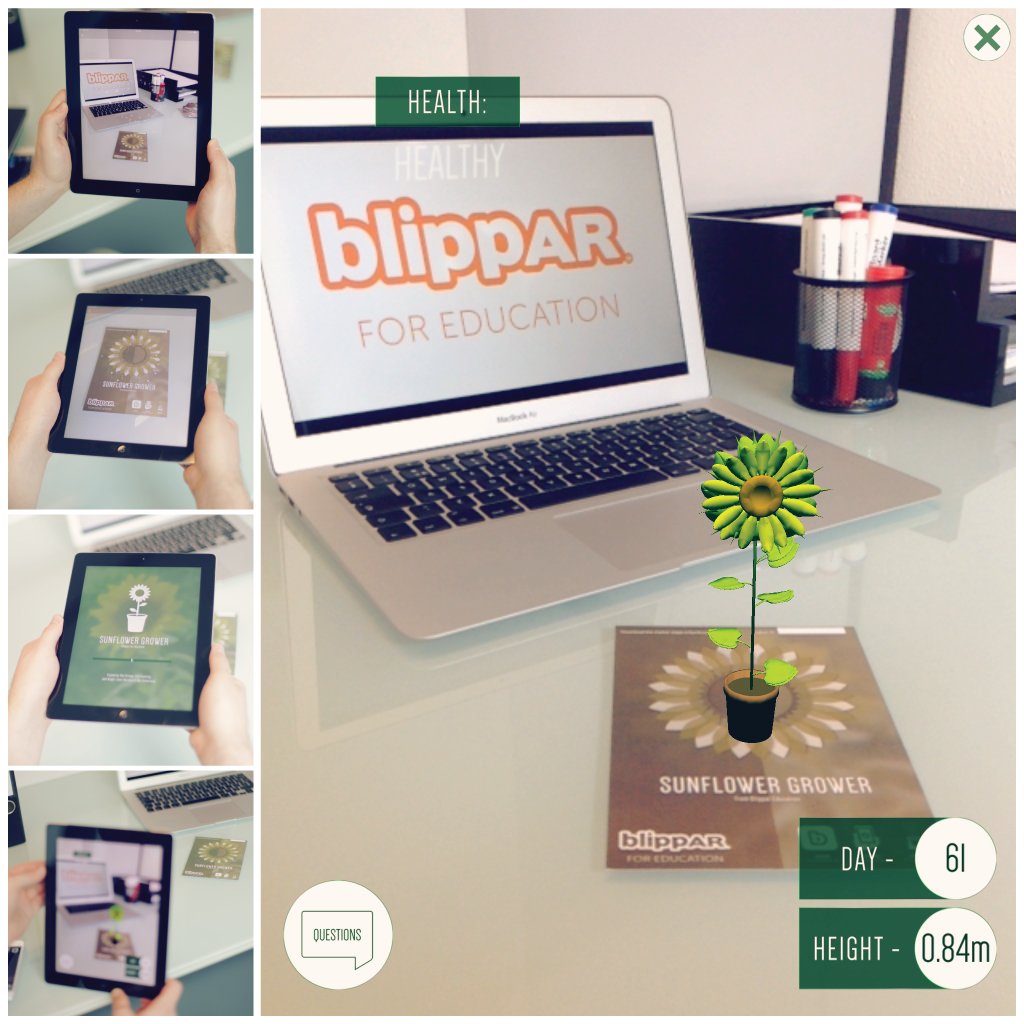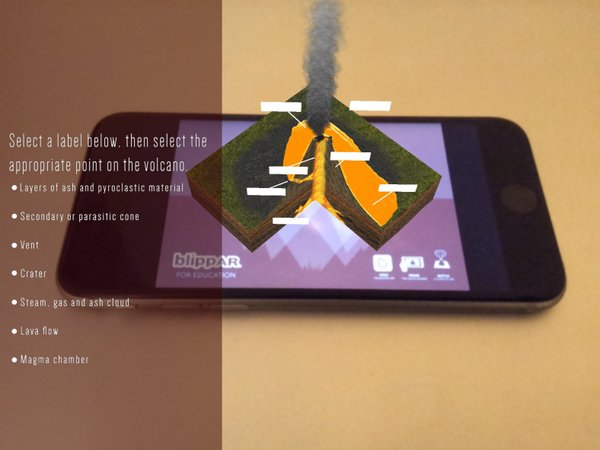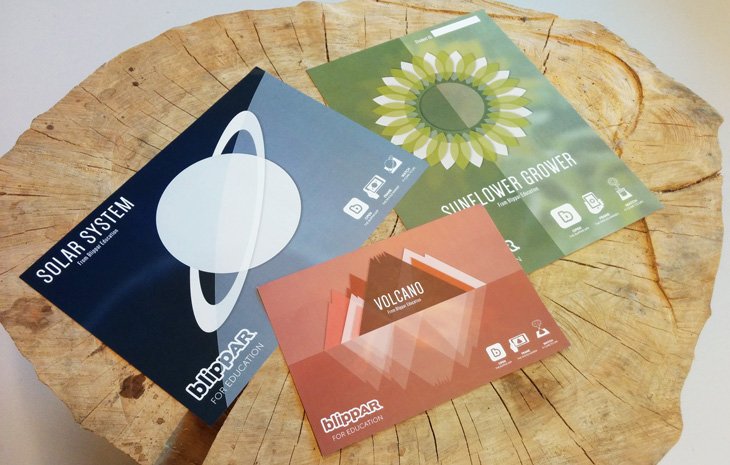Grad Student Requirement – Juli Whetstone
I came into this class wanting to look at how VR can be used for educational purposes. For this project, I interviewed Stephen O'Mahony, the Education Community Manager at Blippar. While Blippar currently does their education work in AR, I thought it would be interesting to learn more about that area. We mainly focused on VR in class, but now with the HoloLens, I feel like AR will become an important topic as well. This quote provides a nice introduction to the focus of Blippar for Education:
“We believe that the most significant contribution that Augmented Reality makes to education is to allow students to experience something that they could never otherwise experience in traditional media or classrooms. This was our starting point, the guiding principle that we put at the core of all our designs,” said Rob Stringer, Education Projects Lead at Blippar in his blog post “Pushing the Boundaries of AR in the Classroom”
(In the interview notes below JW is me, Juli Whetstone and SO is Stephen O’Mahony)
I was interested in talking to someone at Blippar after doing my presentation on the Cardio VR app created by the Blippar Labs, a team within Blippar.
JW: I tried out the Cardio VR app by Blippar Labs and thought it was pretty cool experience. Are there other plans in the works for Blippar to expand more into educational VR?
SO: "Currently there aren't any immediate plans to do more educational VR. Cardio VR was done by our Blippar Labs team, who work on cool projects that are a little outside of the company's core product roadmap. The first of these projects happen to be VR, but the next could be anything - stay tuned to see what comes out of the Lab next!"

Photo from Blippar
Right now Blippar for Eduation has created a series of "Blipps" that are interactive, augmented reality mobile experiences built on their DIY platform Blippbuilder. Essentially, you scan an image with the Blippar app on your phone, and it's like the image comes to life.

Photo from Blippar
One of these Blipps is for the solar system. It puts the learner right in the middle of the solar system. There are facts and information included that correspond with each of the planets.
I experienced the Volcano Blipp myself. Rob Stringer wrote about the project, “Volcanoes are some of the most powerful and impressive features in nature, but unfortunately they don’t usually fit into a classroom, and the clean-up job is beyond even the most dedicated school staff. We decided to build one in AR to help students understand what is going on inside these complex structures.”

Photo from Blippar
JW: I tried out the Volcano Blipp and thought it was quite interesting! What has been the overall response from teachers and students about your education Blipps?
SO: "We've had a great response from teachers and students towards our education blipps. Students have been impressed with the more exciting elements of the blipps such as the exploding volcano model, or the panorama of Mars in our Solar System blipp. Teachers have commented on the dashboard-like feature of the volcano, where they can see which of their students have started the session and the scores that each student has received in the labelling exercise (note that you need the student/teacher markers in order to see this work). If there has been any hint of a critical remark, it is that teachers wish they had an education blipp for every subject!"

Photo from Blippar
JW: What subjects areas in schools do you think can benefit the most from educational AR or VR technologies?
SO: "An attribute common to both AR and VR in the classroom is that both offer students the chance to see or interact with objects and places that they otherwise couldn't. Obviously, AR does it in such a way that those objects are integrated into the student's physical classroom environment, whereas VR takes them out of that environment. The latter can be very effective; take Google Expeditions, for examples, where students can tour historical sites thousands of miles away for the price of a Google Cardboard headset.
Obviously, AR is our focus, and we believe in the physical classroom/virtual lesson amalgamation or blend that AR allows for. I think of medical schools that could save thousands per year by having digital cadavers on a table for students to examine using AR headsets; I think of students in manufacturing disciplines looking at heavy duty equipment and seeing the names of each physical component appear before them; I think of students being able to see a visual representation of fractions, as in our Maths blipp. Visualization, interaction, engagement...these are attributes that AR allows for, and I can't think of subject areas that wouldn't benefit from them."

Photo from Blippar
JW: In what ways do you think AR or VR can enhance learning in the classroom beyond traditional materials?
SO: "Traditional materials are limited in how they represent certain concepts or things. You can read about the planets in a textbook, you can look at pictures of each one, but with the touch of a button our Solar System blipp turns your device's camera into that of the Mars Curiosity Rover, allowing you to examine the surface of the red planet. We still believe in the importance of traditional materials, but AR and VR can lend them attributes that they've never had before, opportunities for engagement that have never been possible prior to the emergence of this technology."

Photo from Blippar
JW: What are the potential hurdles with getting AR/VR technologies into more classrooms?
SO: "There are many: cost is always a factor, for one. There are ways of doing both cost effectively (Google Cardboard gives you a basic VR experience, AR can be achieved using low-end tablets), but school budgets are tight. And while there are ways of experiencing AR and VR inexpensively, Wi-Fi is a crucial component, and from talking to teachers around the world we believe that bandwidth is a major issue in education, and that is something that is not so easily solved. Other hurdles include teacher confidence, and the related issue of finding the time to become experts in delivering AR and VR experiences. It's easy to learn how to use an AR app or a VR app, but that does not mean they are easily integrated into a teacher's lesson plans. The extra planning that goes into such integration is a drain on time that many teachers do not have. The provision of professional development is key to this also, and the absence of such is another potential hurdle. I've had many comments from teachers about having had technology thrust into their hands with an expectation that it is used in the classroom, but without the proper training to do so."

JW: How do you see AR/VR innovations impacting education in the future?
SO: "I think we've seen some great potential already, and that will continue to grow as the technology matures. My hope is that the capabilities of AR and VR apps evolve while the hardware is commodified, making it more inexpensive for schools to implement and for teachers to adopt. Visualization will become an increasingly important aspect of learning, where students will be able to see things that could previously only be described in an abstracted manner. AR and VR will impact on pedagogical models, such as flipped learning - think of the possibilities open to teachers for in-classroom activities that supplement the out-of-class delivery of instruction. These are some of the impacts that come to mind."
You can learn more about the work of Blippar for Education and look at their other Blipps here: https://blippar.com/en/learn-more/blippar-for-education/
COMMENTS